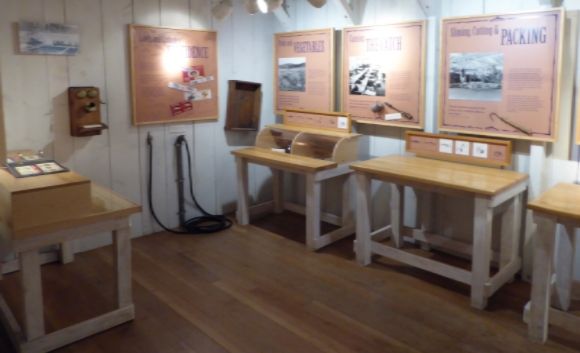The Wasco County Historical Museum is located in the River Gallery in the Columbia Gorge Discovery Center. The Museum has replicas and period objects from Wasco County’s history.


American Indians
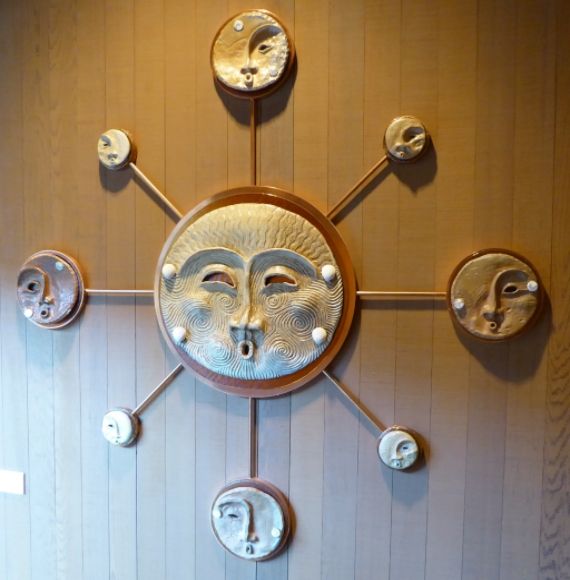 Visitors are greeted by artwork by Native American artist Lillian Pitt (Warm Springs, Wasco, Yakama). She has brought the indigenous iconography of Columbia River rock art to the public and reanimated it.
Visitors are greeted by artwork by Native American artist Lillian Pitt (Warm Springs, Wasco, Yakama). She has brought the indigenous iconography of Columbia River rock art to the public and reanimated it.
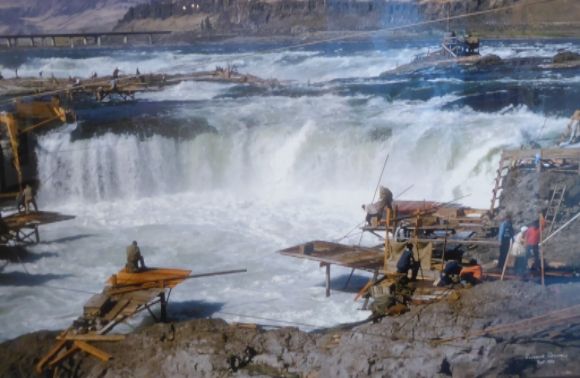 Shown above is Celilo Falls, a traditional Indian fishing site until The Dalles dam flooded the area.
Shown above is Celilo Falls, a traditional Indian fishing site until The Dalles dam flooded the area.
According to the display:
“They put their lives in jeopardy. Fishing in the mighty Columbia was a hard and dangerous enterprise. The Indian men braved the wild water to erect their fishing platforms. Perched above the surging stream, they plunged their dipnets into the schools of migrating salmon. They struggled to wrestle a 20 to 120 pound fish, wriggling in the net, to the deck and to shore.”
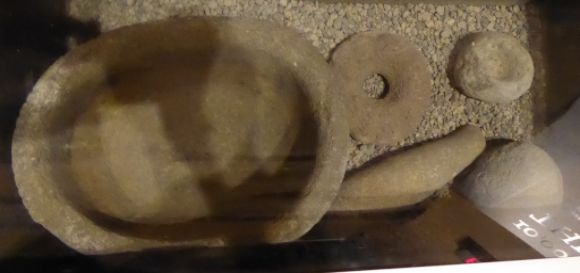 Shown above are some stone artifacts, including a grinding stone and what may be a net weight (that’s the one with the hole in it).
Shown above are some stone artifacts, including a grinding stone and what may be a net weight (that’s the one with the hole in it).
 More stone artifacts.
More stone artifacts.
 The display shown above is about archaeology. The collection of arrowheads, however, is something that amateur collectors, not archaeologists, generally put together.
The display shown above is about archaeology. The collection of arrowheads, however, is something that amateur collectors, not archaeologists, generally put together.
 For 10,000 years, the villages near Celilo Falls served as a traditional trading center for distant Indian nations.
For 10,000 years, the villages near Celilo Falls served as a traditional trading center for distant Indian nations.
Missionaries
As a part of Christian efforts to convert the entire world to their religious beliefs, Protestant missionaries established the Wascopam Mission in 1838 to convert the large Indian population in the area. The Mission was not particularly successful: very few Indians actually became believers. According to the Museum display:
“The missionaries preached, taught school, and attempted to follow the Indians in their seasonal round of food gathering.”
The Museum display also indicates:
“The missionaries at The Dalles experienced many difficulties. Poor linguists, they had difficulty communicating with the Indians.”
The Protestant mission era ended in 1847 following the Cayuse uprising against the missionaries.
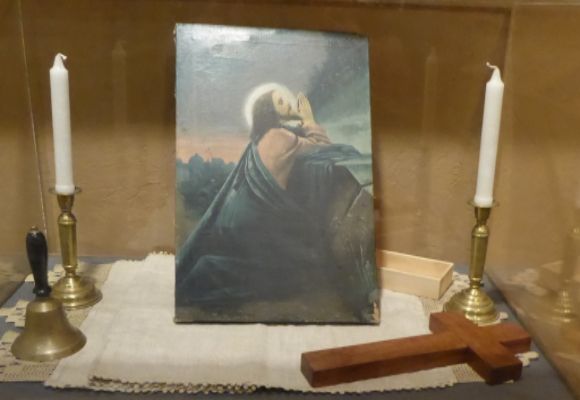
In 1881, an Indian religious movement, known as the Indian Shaker Church, was started by John Slocum (Squaxin). The Indian Shakers founded the Lone Pine Shaker Church near The Dalles. According to the Museum display:
“Unlike the Christian missions, they did not insist on precise beliefs or practices. The Indian Shaker faith drew upon both Indian religions and Christianity. It touched the lives of thousands and survives in a number of native communities.”

The Oregon Trail
During the two decades following 1843, more than 50,000 emigrants followed the 2,000 miles of the Oregon Trail from Missouri to Oregon. Publicists billed Oregon as a land of abundance, the Garden of the World.

Steamboats
In the 1860s, steamboats helped transform The Dalles into a major commercial hub. According to the Museum display:
“Supplies came upriver by steamboat to the mouth of Mill Creek. Off-loaded on wharfs, the goods flowed into shops, warehouses, or directly on the the packs and barrels tied to the backs of hundreds of mules. Teamsters filled wagons to run east to the steamboat landing above Celilo Falls.”





Seufert Cannery
Francis A. Seufert first open a cannery operation in the 1880s. At the turn of the century, he bought up the four other canneries in the area and became the area’s largest cannery. The cannery’s work force was racially segregated with the Chinese who flayed and packed salmon into tin cans at the lowest level. The Chinese workers lived at the cannery.

